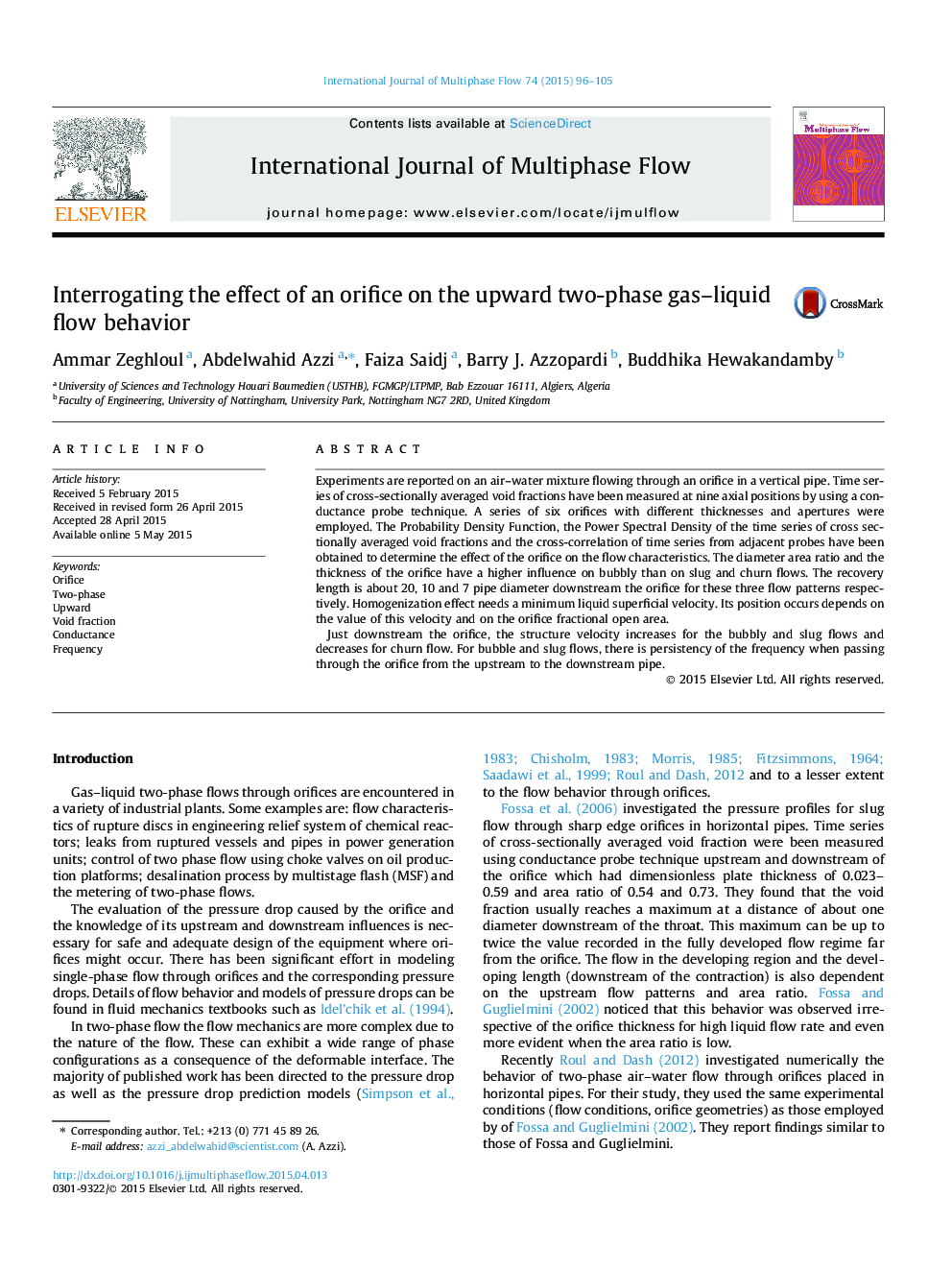| Article ID | Journal | Published Year | Pages | File Type |
|---|---|---|---|---|
| 667223 | International Journal of Multiphase Flow | 2015 | 10 Pages |
•Recovery lengths are 20, 10 and 7D respectively for bubbly, slug and churn flow.•Homogenization requires a minimum liquid superficial velocity.•There is persistence of frequency across this fitting for bubbly and slug flows.
Experiments are reported on an air–water mixture flowing through an orifice in a vertical pipe. Time series of cross-sectionally averaged void fractions have been measured at nine axial positions by using a conductance probe technique. A series of six orifices with different thicknesses and apertures were employed. The Probability Density Function, the Power Spectral Density of the time series of cross sectionally averaged void fractions and the cross-correlation of time series from adjacent probes have been obtained to determine the effect of the orifice on the flow characteristics. The diameter area ratio and the thickness of the orifice have a higher influence on bubbly than on slug and churn flows. The recovery length is about 20, 10 and 7 pipe diameter downstream the orifice for these three flow patterns respectively. Homogenization effect needs a minimum liquid superficial velocity. Its position occurs depends on the value of this velocity and on the orifice fractional open area.Just downstream the orifice, the structure velocity increases for the bubbly and slug flows and decreases for churn flow. For bubble and slug flows, there is persistency of the frequency when passing through the orifice from the upstream to the downstream pipe.
